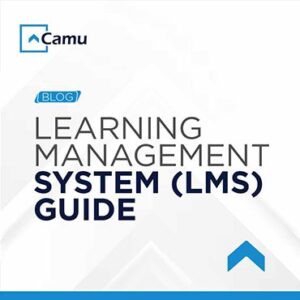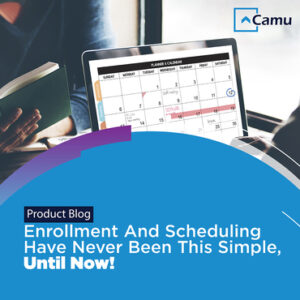
Is E-learning Possible without Learning Management System?
Many would often associate e-learning with learning management system (LMS) without actually knowing their difference. LMS is indeed a useful tool for electronic learning. In fact, a study by EDUcause shows that 73% of professionals believe LMS is critical for distance learning. Nonetheless, these two concepts aren’t exactly one and the same.
An e-learning system is a type of distance learning conducted digitally. This is where learners can access learning materials and resources by connecting their electronic devices (e.g. laptops, tablets, or even smartphones) to the internet. Meanwhile, LMS refers to the software used to deliver and manage learning content in a single platform.
So the real question now is whether e-learning can still be possible without LMS? To answer, here is a comparison of scenarios where you use LMS and where you don’t.
- Knowledge management
Learning materials and resources become more accessible through e-learning. You upload crucial educational or training files over the internet so that anyone can open or download them using their preferred electronic devices. This can be lecture videos or audios, exam files or apps, PowerPoint presentations or text documents.
There are several apps you can use to make these available to learners. For example, cloud storages like Google Drive or Dropbox can centralize all these files into a single platform and make it available to authorized users.
The primary use of LMS is for knowledge management. It doesn’t just serve as a database for all training files and educational materials. It allows you to manage, organize, share and analyze your organization’s courses, resources, documents and people.
- Social learning
Staying connected remains a crucial part of e-learning. Despite the distance, you need to ensure clear communications and promote collaboration with your learners. Otherwise, they might find themselves disengaged and disinterested with the course.
Thankfully, tools such as video conferencing apps and virtual learning environments allow learners to interact with others. The latter allows for real-time lectures and discussions. While the former serves as a hub for teachers and students to collaborate and interact digitally. However, these tools remain limited in terms of supporting effective social learning.
This is where the use of LMS in education comes in. LMS usually provides you with more tools and features to make interactions more dynamic and engaging. In a way, it tries to simulate an average classroom setup. Instead of just listening to lectures, you can also administer exams and other activities in between. Moreover, it is a one-stop platform where your learners can collaborate with other users via dashboards, forums and chats.
- Automation
There are various processes in e-learning that you can automate—from monitoring users’ progress, administering exams and managing knowledge materials. LMS, for one, provides you with tools to automate such processes. Camu is one of the best learning management system examples that offers such features.
Nonetheless, there are other ways to automate your e-learning system. For example, you can use a Student Information System (SIS) to help you manage enrolment, registrations and admissions within your organization. It stores, retrieves and monitors student data within a single database. This way, you can do away with manual systems, making it easier to keep track of your learners.
You can also use Google Forms to automate administration and assessment of exams. Albeit it won’t be as efficient and streamlined as that of a LMS.
- Streamlined learning
Streamlining your e-learning can be tricky without LMS. Nonetheless, it can still be possible. For one, you can integrate all your e-learning tools with one another. This ensures that data remains synced across all software.
But for more streamlined learning, LMS might be a better choice for you. It serves as an all-in-one platform for all your e-learning needs. With LMS, you can manage courses, its corresponding materials and documents, and the students who will be taking that course. There are also different types of learning management systems available: cloud-based ones, self-hosted, or desktop apps.
- Analytics and reporting
How will you know if your remote learning is a success?
The best way to do that is to monitor and track learners’ progress. When their performance starts to improve along the way, you will know that your strategies are working. Even when classes or training are online, you can do this manually. But thanks to technology, you don’t have to.
Of course, there are digital tools such as Microsoft Excel to help you organize and compute your learners’ grade. There is also exam software that will allow you to administer virtual exams and have it assessed automatically.
But an LMS can do more than just track your learners’ progress. It can also extract valuable insights from their activities, performance and engagements. This allows you to determine areas in your strategies that need improvement.
Effective e-learning
So is e-learning possible without LMS? Yes, it is. There are alternative tools you can use to make it happen. However, investing in LMS can make e-learning more streamlined and effective.With so many people wondering why college is so expensive, more are looking for alternative ways to learn new skills or obtain a degree. Fortunately, e-learning is a perfect way to accommodate their needs and demands in a more cost-effective manner. So go ahead and check out how e-learning can be different from traditional learning.







